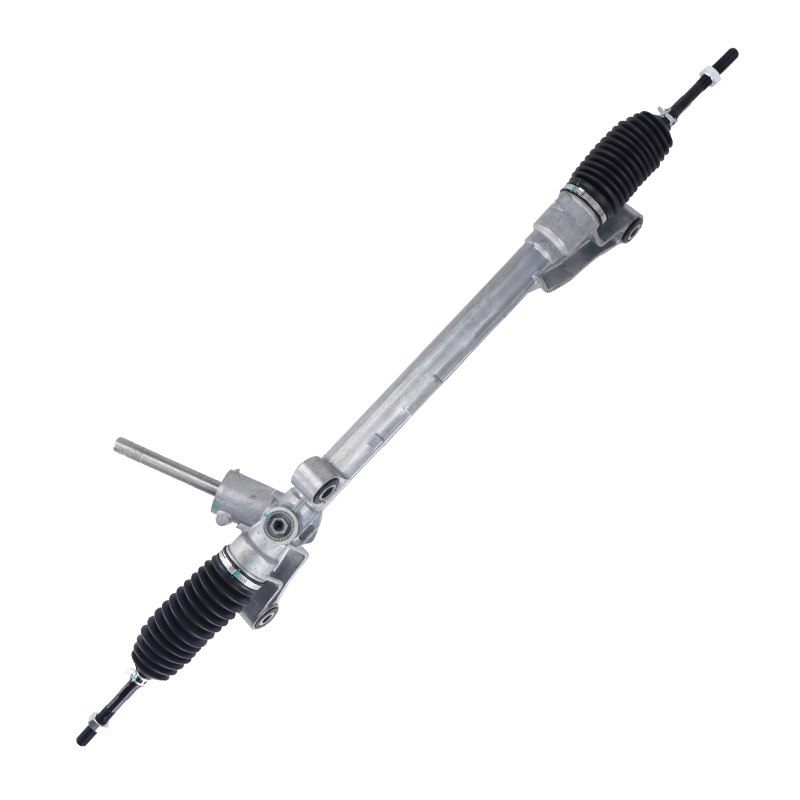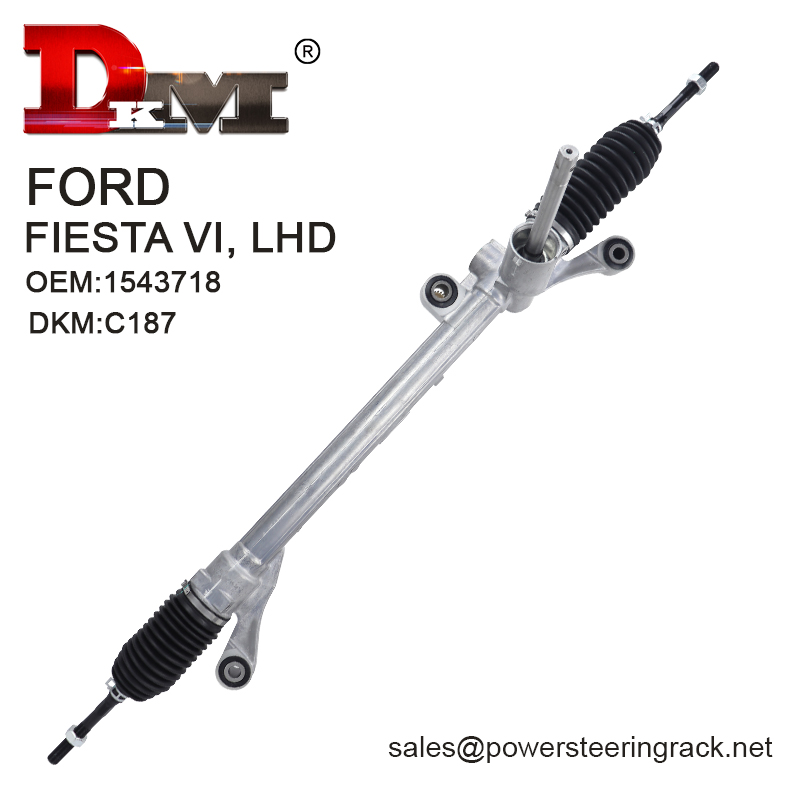In what year did power steering become a manufacturing standard for American cars?
The power steering rack is a technological innovation that revolutionized the automotive industry, making vehicle control easier and enabling drivers to turn the steering wheel without much effort. As the automotive industry developed, the power steering rack gradually became a standard feature of modern cars. However, the power steering rack was not widely used since the birth of the car. It went through decades of development and improvement before it became an important part of the American automobile manufacturing standard at a certain point in time.
This article will delve into the history of the power steering system, the process of its technological development, and the year it officially became a standard feature of the American automotive industry.

The origin and development of the power steering rack
The power steering system was created to reduce the amount of force required by the driver to turn the steering wheel, especially for large and heavy vehicles. The early cars were heavy, and the operation of the steering device required the driver to exert a lot of force, especially when driving at low speeds or parking, turning the steering wheel became almost a physical task.
1. Steering problems in early cars
The steering system of early cars used a manual mechanical system, mainly controlling the steering of the wheels through steering gears and racks. Although this system provides a good sense of control when driving at high speeds, the driver needs to exert considerable force to turn the steering wheel when driving at low speeds, especially when parking. This manual steering system is already inconvenient for ordinary family cars, and the steering problem is more prominent for commercial vehicles, trucks and other large vehicles.
2. Initial attempts at power steering
The earliest concept of power steering rack can be traced back to the early 20th century, but it has not been widely used. In 1916, American engineer Francis W. Davis first proposed the concept of power steering. He was an engineer at Pierce-Arrow, mainly engaged in the research and development of heavy vehicles. Davis realized that the force required for commercial vehicles to turn was too great, especially when driving in narrow streets and urban environments, so he began to explore a technology that could reduce the burden of steering.
After years of research, Davis developed a hydraulic power steering system. The system uses a hydraulic pump to provide power assistance, allowing the driver to get assistance from the hydraulic system when turning the steering wheel, thereby reducing the force required for operation. However, despite the early concept, it was not immediately widely adopted by automakers.
3. Introduction of power steering technology
It was the American car company Chrysler that really made power steering technology widely used. In 1951, Chrysler launched the Chrysler Imperial, the first mass-produced car with a power steering rack. This car used a hydraulic power steering system, which made it easier for the driver to control the steering wheel at low speeds. Chrysler's technological innovation marked the official entry of power steering into the public eye and provided a model for other automakers to follow.
The superiority of the power steering rack was soon widely recognized, and other automakers such as Cadillac and Ford also began to introduce this technology in their high-end models. As power steering systems became popular in the 1950s, more and more car brands began to offer it as an optional configuration.

In which year did the power steering rack become a manufacturing standard for cars?
The power steering rack gradually became popular in the 1950s, but this did not mean that it immediately became a standard configuration for all cars. In fact, in the early automotive market, power steering was considered a luxury item, available only to consumers who were willing to pay extra.
1950s: Popularization of power steering
From the 1950s to the 1960s, power steering racks gradually expanded from luxury cars to mid-range and economy cars. Since vehicles at the time were generally larger and heavier, power steering played an important role in improving the driving experience. Many high-end models began to include power steering racks as standard, while some mid-range models included them as optional. During this period, the demand for power steering systems increased significantly because it allowed drivers to control vehicles more easily, especially in low-speed scenarios such as urban driving and parking lots.
1960s: Technology maturity and demand growth
By the 1960s, power steering technology had been further developed, and the efficiency and reliability of hydraulic power steering systems had been greatly improved. At the same time, with the rapid development of the economy, the number of cars in use continued to rise, especially in the United States, where the average size and weight of vehicles continued to increase, and power steering systems became almost a must-have option for driving comfort.
At this time, power steering racks began to penetrate more models, and many mid-range and entry-level models gradually offered this configuration. Although it was not yet fully standard, more and more consumers were willing to pay for this technology because it significantly improved the driving experience.
1970s: Power steering becomes standard in cars
In the 1970s, power steering racks gradually changed from an optional configuration to a standard configuration for most cars on the US market. In particular, as the size and weight of cars increased further, manual steering systems became increasingly impractical. In order to improve driver comfort and vehicle handling, power steering systems gradually became standard on most models.
The energy crisis in the 1970s also promoted the popularity of power steering racks to a certain extent. As oil prices rose, consumers were more inclined to choose cars that could provide better handling and fuel efficiency, and the introduction of power steering systems allowed automakers to produce larger and heavier cars without much impact on the driver's handling experience.
During this period, the US government and industry associations also began to pay attention to the safety and driving experience of cars. The power steering system was considered an important technology that could improve driver safety and vehicle handling performance. Although there was no specific law requiring all cars to have power steering, market trends and consumer demand led to power steering becoming an industry standard.
1980s: Power Steering Becomes Standard
By the 1980s, power steering was standard on nearly all American cars. Whether it was a luxury car or an economy car, power steering had become an integral part of the vehicle. This technology not only improved vehicle handling, but also improved driver comfort, especially at low speeds such as city driving and parking lots.
Automakers also began to innovate more in power steering technology, such as introducing more efficient hydraulic systems and electronic power steering (EPS). These technological innovations further promoted the popularity of power steering.

What is the impact of power steering racks?
The process of power steering racks becoming standard is not only a reflection of technological progress, but also a result of consumer demand and market competition. As vehicles became larger and more complex, power steering became indispensable.
Changes in cost
When power steering was first introduced, the cost of installing the system was high, and only consumers who were willing to pay for comfort and convenience would choose this option. However, with the advancement of production technology and the increase in market demand, the production cost of power steering systems has gradually decreased. By the end of the 1970s, the cost of power steering systems had dropped to a reasonable level, allowing it to become a standard feature of all models.
Impact on driving experience
The introduction of power steering systems has significantly improved the driver's experience, especially when driving at low speeds and parking. Manual steering systems require drivers to apply a lot of force to turn the steering wheel, while power steering systems make this process easy. For American consumers at the time, the popularity of power steering systems was undoubtedly a major change, which not only improved driving comfort but also reduced driving fatigue.
Looking for a reliable supplier of power steering racks?
At Guangdong Diamond Auto Parts Co., Ltd., we provide high-quality steering components at affordable prices. Our factory in China manufactures steering systems for a variety of global car brands. We offer customized solutions for your specific needs, whether you're in the automotive OEM market or need aftermarket products. Buy with confidence and enjoy discounted prices on bulk purchases.




